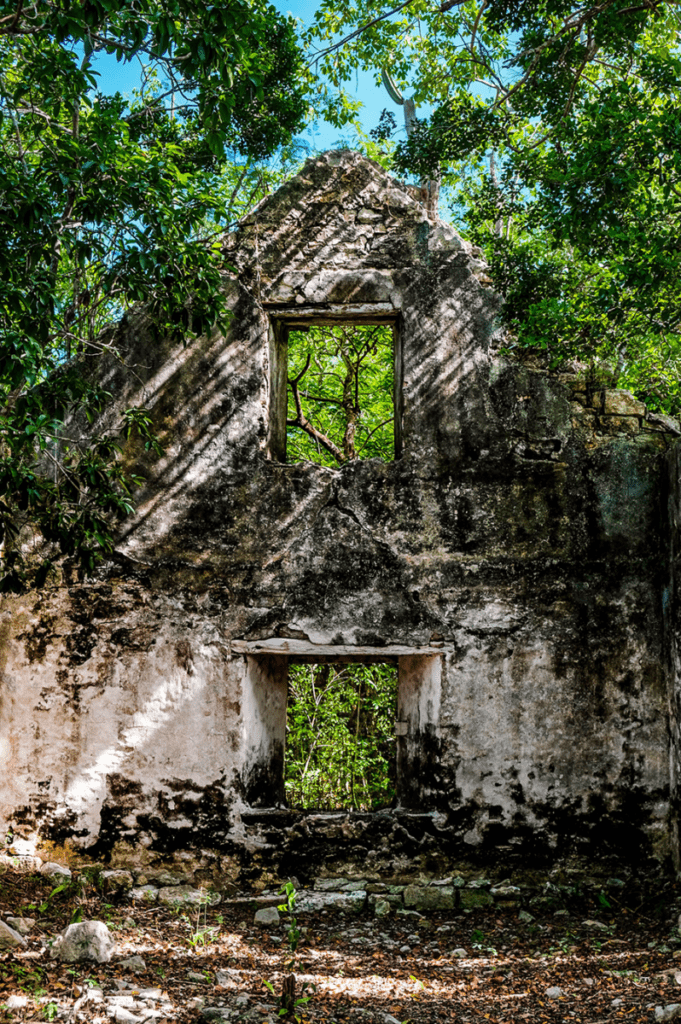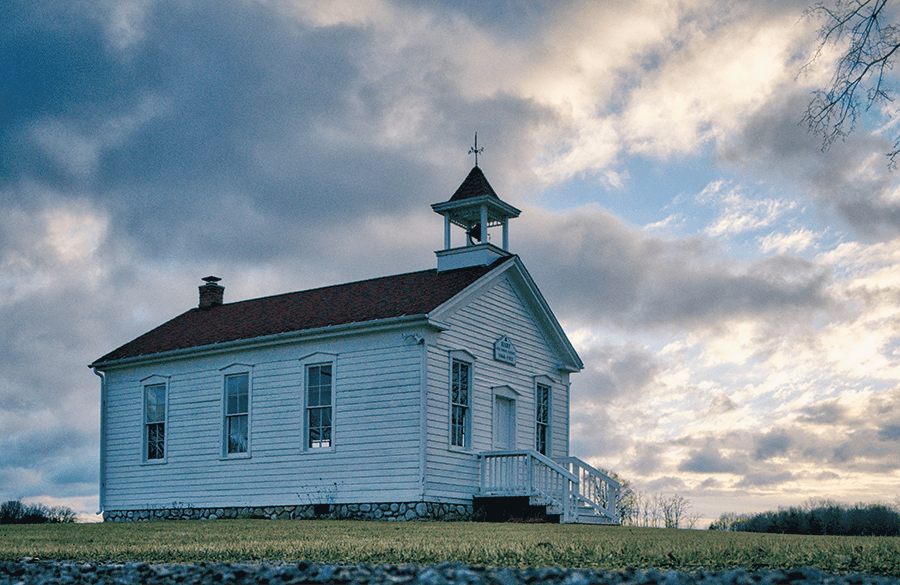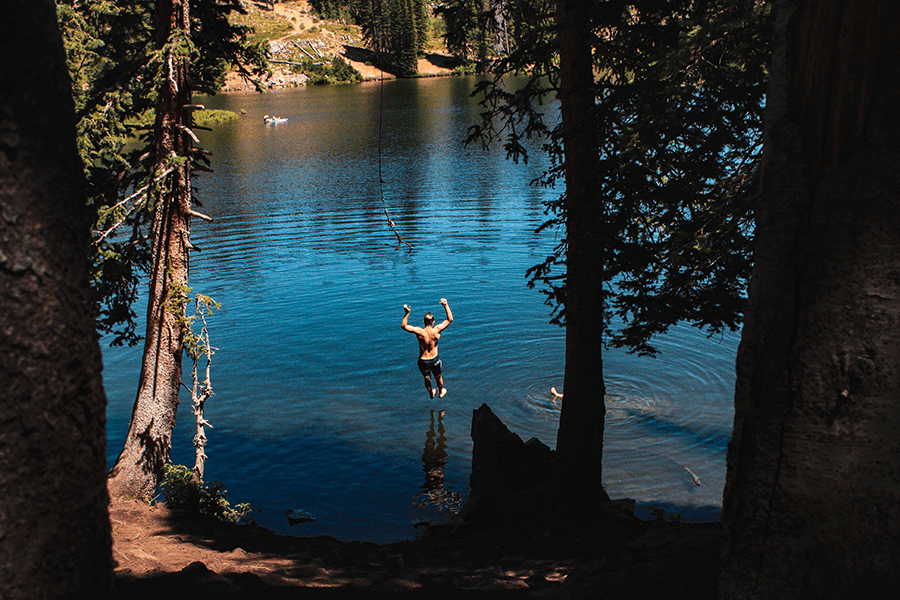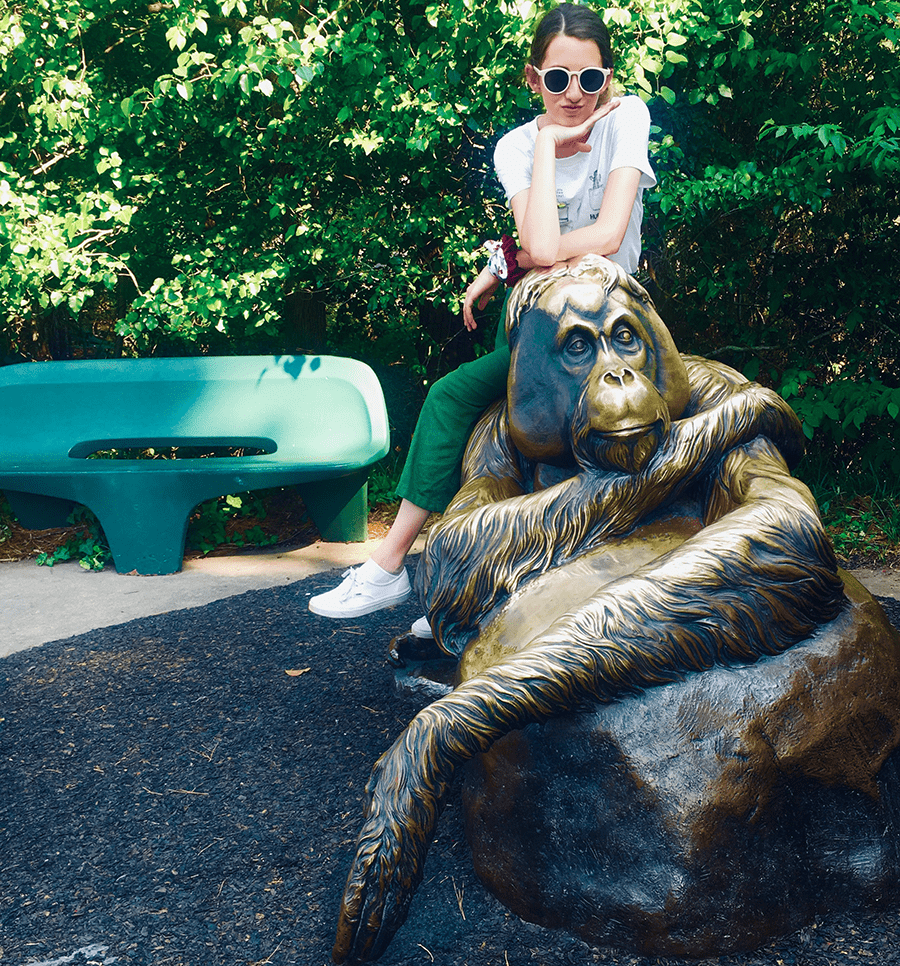
Metal detecting can be a very fun and exciting activity. However, it can also prove frustrating at times. Nobody wants to spend an afternoon detecting and recover nothing. This can be especially deflating for new detectorist and children who may be along for the journey.
Thankfully we have found 21 places that are active and are almost sure to set off your detector frequently. These locations may not net you pirate treasure worth millions, but they will almost certainly yield some fun and interesting finds. The best part is, most if not all of these locations are near you!
1. Playgrounds
Playgrounds are a great place to metal detect for lost items. We have found many current coins and other fun items in these locations.
Underneath the monkey bars is great places to start. Children will often hang upside down from this equipment resulting in loose change falling from their pockets into the sand or dirt below.
Under the swing set is another great place to hunt. Similar to the monkey bars, items will often fall from pockets as people enjoy this favorite playground past time.
The rest of the playground can also yield some interesting finds. Don’t neglect the slides, ladders, jungle gyms, climbing walls, forts, etc. Anywhere someone has been active has potential to have some treasures waiting for you.
Be sure and check the local rules before you begin. Some school playgrounds are off limits to the public and some public playgrounds do not allow digging within them. If I am hunting a school playground and school is still in session, it is a good practice to turn any finds into the school office, as one never knows the life situation of the child who lost the item.
2. Parks
Parks are another great location to almost ensure you and your detector get a work out. So many things happen in parks that could easily result in lost items within.
Anywhere people might have been active within the park is a great place to start. Look for places where people gather for exercise classes or recreational sports such as frisbee, flag football, or just playing catch.
Other good spots to consider would be anywhere a park visitor may have sat down to rest, read, or just spend some time outdoors. Often items will fall from pockets when one sits down. Other times things are simply sat down and lost or forgotten. Large shade trees are a perfect example as people love to sit underneath them.
Also hunt areas where people tend to visit or pass through regularly. The higher the traffic, the more likely something has been dropped and lost. The area between the parking lot and a playground is a good example of this type of location. Flagpoles and directories are great as well
3. Old Schoolhouse Locations

These old schoolhouses can yield some really cool and old finds. The most difficult part of this hunt is finding these locations. This will probably take a little prep work, but could result in some great stuff.
Most cities and towns are peppered with old schoolhouse locations that most people don’t even realize. This is because most of them have been either demolished or repurposed, making them very difficult to spot. However, local libraries and history centers can provide some great insights into their locations.
We did a little research at our local library and found some old plat maps that we then overlaid with Google maps. Using this technique we were able to locate 3 or 4 old schoolhouse locations within our own town. Only one was still standing but foundations could be seen where the others were located.
Typically these old maps will denote a schoolhouse with a little solid black square or a small solid black square with a flag on top.
4. Walking Trails
Walking trails are all around us and can have some cool items hiding around them.
The best places to hunt are in the grass or dirt directly beside the walking path. Most items people drop will not bounce very far into the grass, so concentrate your search within a few feet of the actual trail.
If the trail is gravel or dirt, it might not be a bad idea to search it as well. Items will probably be less frequent as the worn down path makes items of interest easily visible. However, you are already there, might as well spend a little bit of time on the path if applicable.
Also look for any places people may congregate or stop as they walk the trails. Path markers, and maps are great examples of these types of locations. Sidewalks also fit in this category.
5. Stadium Seats
Many things happen under the bleachers, some of which are not to be mentioned. However this is a great place to whip out the metal detector.
The excitement of watching a sporting event, whether it be professional or little league, is something tangible. The constant standing and sitting as the fans cheer for their team result in items falling underneath. From dropped concession stand change, to spilled purses, one can never be sure of what they will find.
This is true for big stadium type bleachers and smaller ones found in local parks. This hunt can prove problematic at times as accessibility can be an issue. Also many of these seats are metal, resulting in many false signals due to the structure itself. Don’t let this deter you from hunting these sites.
6. Ball Fields
In conjunction with the bleachers, the ball fields themselves are great spaces to hunt. They can be small practice fields or elaborate complexes, or anything in between. These spots are definitely worth a look.
Good places to search here include the sidelines, or bench areas where non participating players are waiting to enter the game. Also consider where fans congregate to watch the events or practices.
High action places such as midfield, goal lines, baselines, etc are great places to find some treasures. Don’t neglect team staging areas or paths traveled to and from the field itself.
7. Picnic Areas
Another prime hunting spot is in and around picnic areas. These areas are used for a variety of reasons ranging from single person study areas to multi-family gatherings, making them great locations to recover lost items.
Obvious areas include around picnic benches and grill stations. Don’t forget to check around fire pits, and restrooms. Also be on the look out for places people might set out a blanket on the ground for a traditional picnic.
This area will net a lot of trash, especially pull tabs, soda cans, and aluminum foil scraps, but it can also hide some great treasures.
8. Beaches
Perhaps the most obvious location on this list, beaches are great places to find all sorts of things. Their popularity helps ensure an ever replenishing supply of treasures waiting to be found.
There are no obvious spots to hunt as most of the beach is used. Any permanent seating areas or walkways are great places to start. The best strategy for searching a beach is to walk overlapping paths up and down the beach.
Low tide is a great time to hunt areas that are underwater during high tide. Also consider hunting immediately following busy sessions at the beach such as spring break.
Many local lakes have small beaches that can be hunted as well, so do not worry if you live in a land locked state as we do. One last thing to consider is the high minerals in the sand make it difficult to detect with low end detectors.
9. Swimming Holes

Who doesn’t love a jump in cool water on a hot day! Many times this results in items being lost by swimmers. Local swimming holes or areas are great places to find some treasure.
These places are typically small in area making them easy to search. Concentrate on areas where people might be waiting to take their turn at the plunge. If you have a waterproof detector, the actual water might hold some good finds!
Also look for areas where swimmers exit the water to return to dry ground. Occasionally you can see a clothes line near by, make sure you hunt around it as well (if you have permission and it is accessible).
10. Tubing Routes
Similar to swimming holes, tubing routes can be a viable option if the conditions are favorable. This is perhaps the hardest hunting area on our list.
Start and stop locations are obvious areas to hunt as many items fall as people get on and off the tubes. However, many items are lost along the way in the actual river itself. If you have the proper equipment and the conditions are good then a hunt in the river could be possible.
However, use extreme caution as rivers can be unpredictable with currents, sudden changes in depth, flash floods, and debris/people floating downstream. Loss of equipment, serious injury, or even death are possible if one choose to hunt this location.
We recommend that you do not hunt in the river using a metal detector, instead try using magnets! Check out our post on magnet fishing for more information on this great hobby!
11. Fairgrounds
Traveling fairs are a lot of fun and bring the community together. This is a perfect recipe for treasures to be lost by attendees. Typically the land used for these fairs is empty in the off seasons.
For the best hunting experience, be familiar with the fair and its setup. Note locations of rides, food trucks, and game stands. Anywhere money changes hands is a great place to search.
Entry gates and bandstands are also hot spots for lost items. Main walkways is another good place to concentrate. There really is not a bad spot to hunt on fairgrounds and new treasures are deposit every year!
12. Benches
As we have established, when people sit down, things tend to fall out of pockets. Often this is not noticed so benches are a great place to search.
We touched on this briefly in the parks section above so we won’t spend much time on it here. Park benches, are obvious places to search, but there are a lot of other benches around that people tend to overlook.
Many walking trails, rest stops, neighborhood ponds, hiking trails, and even city streets contain benches. Be on the look out and grab your detector when you pass by one for a quick hunt.
13. Hiking Trails
Hiking trails are a great way to get some fresh air and exercise. These trails can be relatively short and easy or long and difficult. Many different people visit these trails making them prime hunting locations.
Search the trails as well as the ground on either side. Pay attention to areas where people may stop to rest or congregate. It is also a good idea to spend a little extra time around more challenging terrain such as small inclines or rocky sections of the trail.
Use caution here as well as being distracted around difficult terrain can be dangerous.
14. Low Water Lakes
Recreational lakes are great places to hunt for treasures. The shoreline is an obvious spot, however a low water level lake provides a unique opportunity.
We have found numerous treasures hunting in these normally water soaked areas, including jewelry. Explore this newly exposed ground and hunt it where you like as there is not rhyme or reason where items fall or get carried to. We like to concentrate on areas that make natural sluice boxes.
This area will turn up a lot of old fishing sinkers and lures that are often still in good enough shape to add to your own tackle box. Beware of hooks!
15. Campgrounds
Many lakes and parks offers camp grounds for those seeking an over night adventure. These are great places to hunt and could make for a cool family weekend combination of camping and metal detecting.
There are usually two main types of campgrounds, primitive and electrical offered. Primitive is for tent camping mostly and are typically scattered throughout the area. Search around logical tent placement locations as well as around fire pits and eating areas.
Search around electrical lots as well. There will typically be more concrete in this area but campers can bring more items along. You will find a lot of trash in these areas but don’t let that deter you from hunting.
16. Fishing Spots
This is a very broad category as almost anywhere around a body of water can be a fishing spot, however there are some signs to look for.
The most obvious of fishing spots are those at the end of a trail. Large clearings along the shoreline is another great hint of a prime fishing location. Some lakes have dedicated fishing areas to segregate fish hooks from swimming areas.
Look for coves, boat ramps, dams, or docks and hunt around them. You will find lots of fishing tackle so be cautious of hooks. There is also the possibility of some other great finds in these spots.
17. Picture Locations

We have all seen the family pictures with beautiful backgrounds and you may have noticed some families in the process of getting their picture taken.
Some of these places can be great hunting locations, others not so much. We want places that are visited often so as to increase our chances of something being left behind for us to find.
Look for places near professional photography businesses. Many of these business have outdoor sets behind their building. These can be good locations as they are visited often. Get permission and go hunt!
Also be on the look out for local statues or landmarks where people constantly take pictures in front of or on top of! Be cautious and get permission.
18. Your Own Yard
This category may seem like a filler as it is not very glamorous, but your own yard might be littered with targets. Best part is, you don’t have to go anywhere and you already have permission!
We found numerous objects in the yard ranging from odd shaped metal to a solid lead bar. Be careful of buried utility lines and sprinkler systems etc.
You could also ask any neighbors for permission to hunt their yards as well. Just make sure you have an understanding of what is to be done with whatever is found on someone else’s property before you dig any targets.
19. Known Strewn Fields
Meteors are constantly bombarding our planet and some of them make it to the ground becoming meteorites. As they break up in our atmosphere or upon impact they scatter interstellar debris along what is known as a strewn field.
Many of these strewn fields are known and can be hunted with a metal detector to find these space rocks. Most of them contain iron and nickel thus making them detectable! For more information on using your metal detector to hunt meteorites, check out our article here.
Most of these have already been hunted but these fields are vast and can still yield unique out of this world treasures. Check out this website that has mapped every known meteorite strewn field.
20. Local Social Spots
Many communities have local social spots that are unique to that particular town or area. For example my town has a local rodeo arena which could be a great place to hunt. Our community also hosts multiple parades each year and the route is always the same. Hunting the known sitting areas could prove active.
Be on the look out for these areas in your local area. Anywhere people gather socially can be a great place to find any lost treasures.
Final Considerations
Always seek permission and know the local laws and regulations before you begin any hunt. Ignorance of the law is not an excuse and may not save you from a fine or jail time if you happen to break local laws or ordinances.
It is also a good idea to try and find the owners of any objects found. This is impossible more often than not, but those rare occasions you can reunite someone with a lost wedding ring are worth more than any pawn shop can give you.
These are suggestions of where lost items could be located. Some of these locations could be dangerous. Embark on these metal detecting hunts at your own risk.
Stay safe and have fun!
Old Building Photo by Nicole Keller on Unsplash
Schoolhouse Photo by Aaron Burden on Unsplash
Swimming hole Photo by olivia hutcherson on Unsplash
Girl on Statue Photo by Caroline Torman on Unsplash
